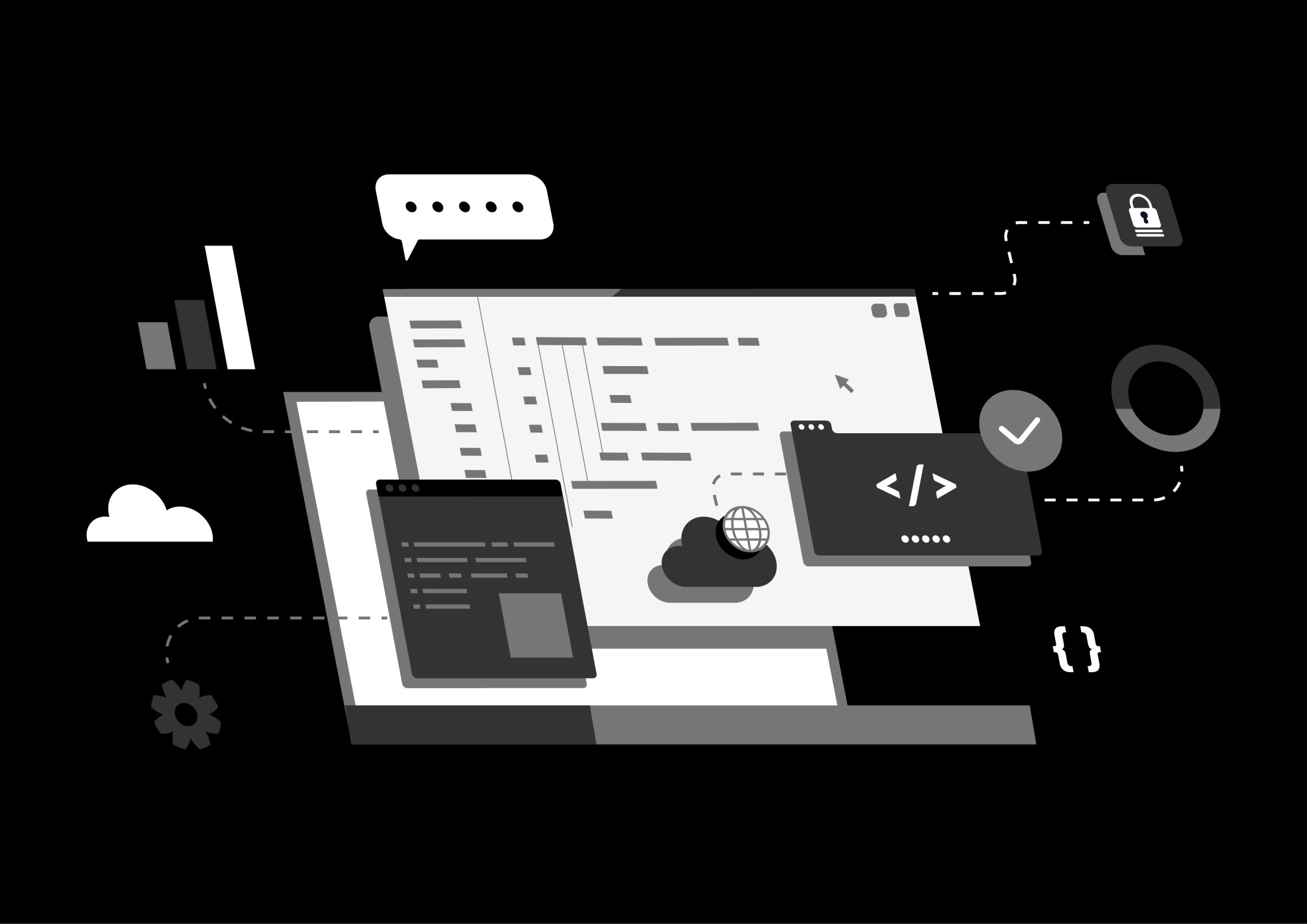Building online success stories through October CMS

A CMS is designed to support an array of needs for individuals or businesses, from straightforward blogs to intricate e-commerce platforms and enterprise-level websites.
You've probably heard of the most popular CMS, WordPress, as it currently powers more than 43% of websites worldwide. Celebrating its twentieth birthday this year, the widely known open-source blogging platform constructed using the PHP programming language has now evolved into a dominant CMS.
WordPress allows people to create digital content easily on the backend of a website, even if they don't have advanced technical development skills. Moreover, WordPress offers tens of thousands of plugins that can be integrated into your website to enhance its functionality. Whether you require features like e-commerce, search engine optimisation, event booking, forms, or more - WordPress has a plugin for that.
Other popular CMS platforms include Wix, TYPO3, and Drupal; however, here at JUMP, our development team uses October CMS.
What is October CMS?
October CMS is a relatively small product that made its debut in 2014 with a clear mission: to be a platform "crafted by developers, for developers."
This update not only brought in a powerful CMS but also came with a set of tools crafted to make it easy and quick for developers to create brand-new plugins from the ground up.
Like WordPress, October CMS relies on the PHP programming language as its underlying technology. However, October CMS distinguishes itself from WordPress by utilising the Laravel Framework - the most popular and well-regarded PHP framework - as its core foundation. This choice translates to a wealth of straightforward, elegant, and potent features readily available right from the start of the development.
October CMS is widely known for its flexibility, extendability, and developer-friendly approach, which is why at JUMP we are an October CMS agency and partner, and we think it is the best CMS software.

The Similarities between October CMS and WordPress
Regular updates
Both platforms receive regular updates to improve security, fix bugs, and introduce new features. Keeping the software up-to-date is crucial for maintaining website security.
Extensibility
Both WordPress and October CMS are renowned for their extensibility, a core feature that empowers developers to customise and enhance websites with ease.
This extensibility is primarily achieved through plugins and theme systems, enabling developers to modify the appearance, functionality, and behaviour of websites.
For example, both WordPress and October CMS offer plugins for SEO, e-commerce, and social media sharing.
The Differences between October CMS and other CMS Platforms
User functionality
Platforms like WordPress were designed with the intention of enabling non-technical users to swiftly formulate a basic website. However, its flexibility through its wide range of plugins from different developers comes with a number of security risks and drawbacks.
These can include situations where a plugin only partially fulfils your requirements (reaching about 80% of your needs) or instances where a plugin gets abandoned by its developer. If not managed carefully, the complexity and bugs associated with these plugins can quickly become unmanageable.
On the other hand, October CMS was specifically crafted for web developers to fashion software solutions that precisely match the requirements of their end users, typically clients.
While there exists a selection of third-party plugins available for installation, developers often find it more expedient and advantageous to build their own from the beginning. This approach results in a more streamlined codebase that delivers precisely what the client and website needs, without unnecessary features. This gives October CMS developers a system that facilitates the rapid creation of customised plugins.
Upgrades
The age factor plays a significant role in distinguishing older platforms like WordPress from October CMS, mainly because WordPress originates from a time period when PHP was primarily used in a procedural manner. Consequently, this approach results in code that is challenging to maintain, debug, and integrate seamlessly.
October CMS belongs to an era when Object-Oriented Programming (OOP) was the prevailing paradigm for crafting PHP code. This shift allows for the development of a more contemporary, resilient, and tidier codebase, significantly simplifying the processes of coding, testing, and providing ongoing support.
The Benefits of October CMS
Customisable lists, forms and widgets
Utilising the built-in October CMS elements, you have the capability to swiftly construct an aesthetically pleasing backend administrator view that precisely fulfils your requirements and makes it easy for a user to edit and change the frontend.
Moreover, should the need arise to expand its functionalities beyond the basics, extending October CMS and incorporating custom elements is a straightforward process for a developer.
Security
Security takes centre stage in October CMS, with numerous core features boasting inherent security measures.
For instance, the Eloquent ORM provided by the Laravel Framework, which is used for database interactions, provides protection against potential attacks. Additionally, a continuous stream of security updates is consistently released to fortify the system's defences.
GitHub and Composer
While it might not initially appear significant, this feature holds immense value for our development team at JUMP. October CMS and Laravel come pre-equipped with both GitHub and Composer support, in contrast to WordPress which has neither.
GitHub stands as the leading solution for securely housing a website's code, offering robust version tracking capabilities that enable you to precisely monitor code modifications and their authors.
Composer, as the foremost Package Manager for PHP, boasts an extensive library encompassing over 3 million packages contributed by developers. This tool grants you the ability to seamlessly combine a multitude of low-level, open-source packages to assemble comprehensive, top-tier software applications.
Amazon web services
At JUMP, we are avid supporters of Amazon Web Services.
The built-in integration with AWS Simple Storage Service (S3) right from the start offers you the means to securely and reliably store your clients' static resources. These resources, including images and files, are readily available for caching, ensuring swift retrieval for your users around the world
Multilingual Support
Websites built with October CMS also have built-in support for multilinguals, making it ideal for businesses targeting international audiences across seas.
User experience (UX)
We understand that certain users might be accustomed to the familiarity of the WordPress backend, so may feel potentially hesitant about building a website on an unfamiliar system like October CMS.
Here at JUMP, we hold the perspective that October CMS is the best CMS software because its sleek backend interface offers an aesthetically pleasing and user-friendly experience. It is thoughtfully designed with the user's needs in mind and free from unnecessary clutter on the screen.
The JUMP Way: An October CMS Agency
JUMP has meticulously crafted and engineered a diverse collection of more than 40 bespoke October CMS plugins. These encompass a wide spectrum of functionalities, spanning from Cookie Consent management and support for Google Analytics to seamless integration with social media platforms and dedicated tools for enhancing SEO (Search Engine Optimisation). The beauty of these plugins is their adaptability, as they can be seamlessly utilised across all digital projects.
We understand that there are users who may have tried October in the past and may have had poor experiences, especially with their Page Management Plugin.
With that in mind, we have created an alternative version of the Pages Plugin that adds the following features:
New Section Editor: Much like WordPress' Gutenberg, our section editor empowers you to construct your page content using meticulously designed content blocks that cater to your specific requirements.
Version Tracking and Preview: Keep a record of alterations made to each page and obtain a preview of the page's appearance before finalising and publishing your edits.
Enhanced SEO: Modify a diverse set of SEO metadata fields to optimise your search engine rankings. This feature continually evolves in sync with the dynamic landscape of SEO best practices.
At JUMP we streamline the process for you to effortlessly update your content, maintain brand consistency, add new content at your convenience, and edit your website, all from within the October CMS backend.
Interested in a bespoke website that you can easily customise?
At JUMP we take immense pride in our ability to provide comprehensive support to our clients, spanning all the way from in-depth user research and brand identity development to the creation of tailored digital solutions.
Our commitment to creating unique brand identities and designs extends seamlessly to the websites we build.
To achieve this, we leverage the formidable combination of October CMS and Laravel, a robust foundation that empowers our skilled development team. All of our websites are built with October CMS and are efficiently and delightfully crafted to precisely align with your requirements.
Don't hesitate to reach out to us today to embark on your website development journey with JUMP on what we believe is the best CMS software, October CMS.